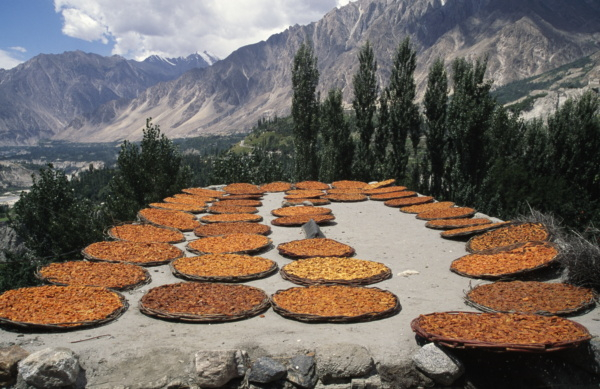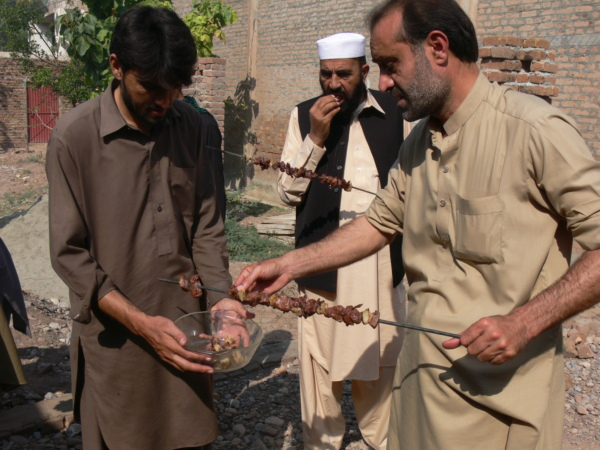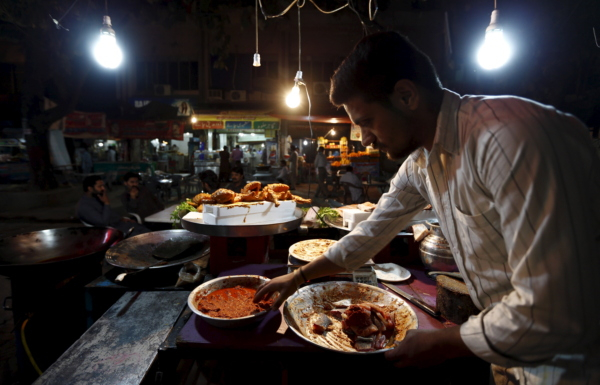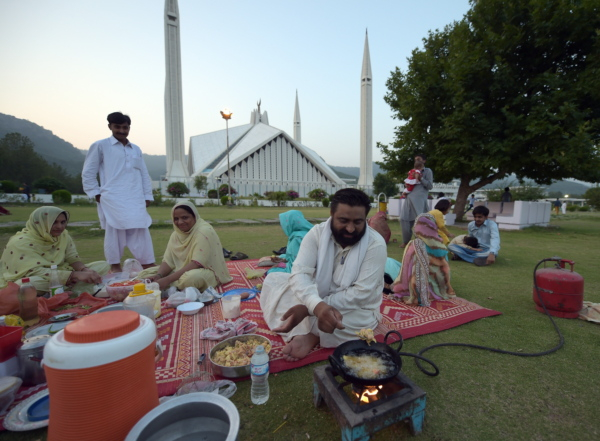
It’s a question I don’t shy away from, but the answer is never straightforward. What makes Pakistani food so different? What shapes the country’s flavours most are its geography and borders, its history of invasion and migration, and the ethnicities of its culturally diverse provinces. Much of its recipes, people and produce are undiscovered for reasons of remoteness, lack of exposure, or simply because it’s lost in translation.
When I was a child, it was the holidays in Pakistan I most loved. Sometimes we would visit Lahore in Punjab to see our cousins, where evenings would be spent taking in Mughal architecture and eating local dishes like Lahori fried fish coated in gram flour and spice; or chargha — whole spiced chicken, steam-cooked and flash-fried. Travelling further north to cooler areas was equally special, not only because of the romantic rusticity but also the people. Simple seasonal food wove its way into their lives so intricately.
On the road to Nathia Gali via Murree — both hill resorts in Pakistan — the first aromas
that hit me were the intense smokiness on the mountain breeze, from outdoor steel-can burners and coal from the clay ovens cooking local breads, brewed northern qawa (green tea with lemon and cardamom), and spicy chicken corn soup cooked in large stainless steel pots called degchi.
Taste the scenery
Moving still further north, the Chitral and Hunza valleys are flanked by the Hindu Kush and Karakorum mountain ranges. Previously isolated, they now make part of a thoroughfare from the capital, Islamabad, to China: the mighty Karakorum Highway. It’s inaccessible during winter, but easier to visit at other times of year. Late autumn is breathtaking: Ingeniously irrigated green wheat fields weave through the valley floors, the air fragrant with the jasmine-like scent of Russian olives and freshly milled grains, and everywhere are flames of orange, rust and lime-green leaves. The trees on and around the mountains are alive with vibrant Hunza apricots and plums; their fruits are plucked and left to dry in large baskets on the mountainsides, on rooftops and boulders, ready to be eaten in the winter ahead.
Heritage recipes
The Hunzakut people fascinate me. Many of their recipes are steeped in folklore. Diram phitti, a sweet, fermented bread cake made with germinated wheat flour, eaten during the Thummushiling festival for the vernal equinox. These people are said to have great longevity: Their diet of apricots, wheat, aged butter, local honey, salted butter tea, goats’ milk products and water from the glaciers of the Karakorums is said to be responsible. Their food is hearty and uncomplicated, such as burutz berikutz (herbed fresh cottage cheese in chapattis). Kitchen practices are often still basic: hearth fireplaces, and cooking on hot stones or in stone pots.
Chitral, another northern region, is deeply influenced by central Asian and southern Chinese traditions. It’s the birthplace of polo — the sport is still hugely popular in the summer, and food and festivity is a part of the celebration surrounding the game. The most popular dishes in this mountainous region are kali (herb, caper, noodle and meat soup) and mantu, Uzbek-style steamed dumplings filled with spiced lamb or beef. Wild capers and thyme find their way into hearty soups and breads, and are dried for use later. My favourite foods from here are ghalamandi (cottage cheese, chive and walnut oil-filled flatbreads) and rishiki — pancakes with honey and curd cheese. Stand-out ingredients include intensely flavoured walnuts, mulberries and sweet, dark oranges.
North Pakistan is hugely diverse; there are deep, historic undercurrents to its rustic cuisine, which bear influences of the Silk Road and invaders from other lands. For me, the region will always be synonymous with eating chargha and warm burutz berikutz with my cousins on the streets of Lahore late into the night.
Sumayya Usmani is a food writer and teacher based in Glasgow. Her first book, Summers Under the Tamarind Tree: Recipes and Memories from Pakistan, is out next month.
— Guardian News & Media










